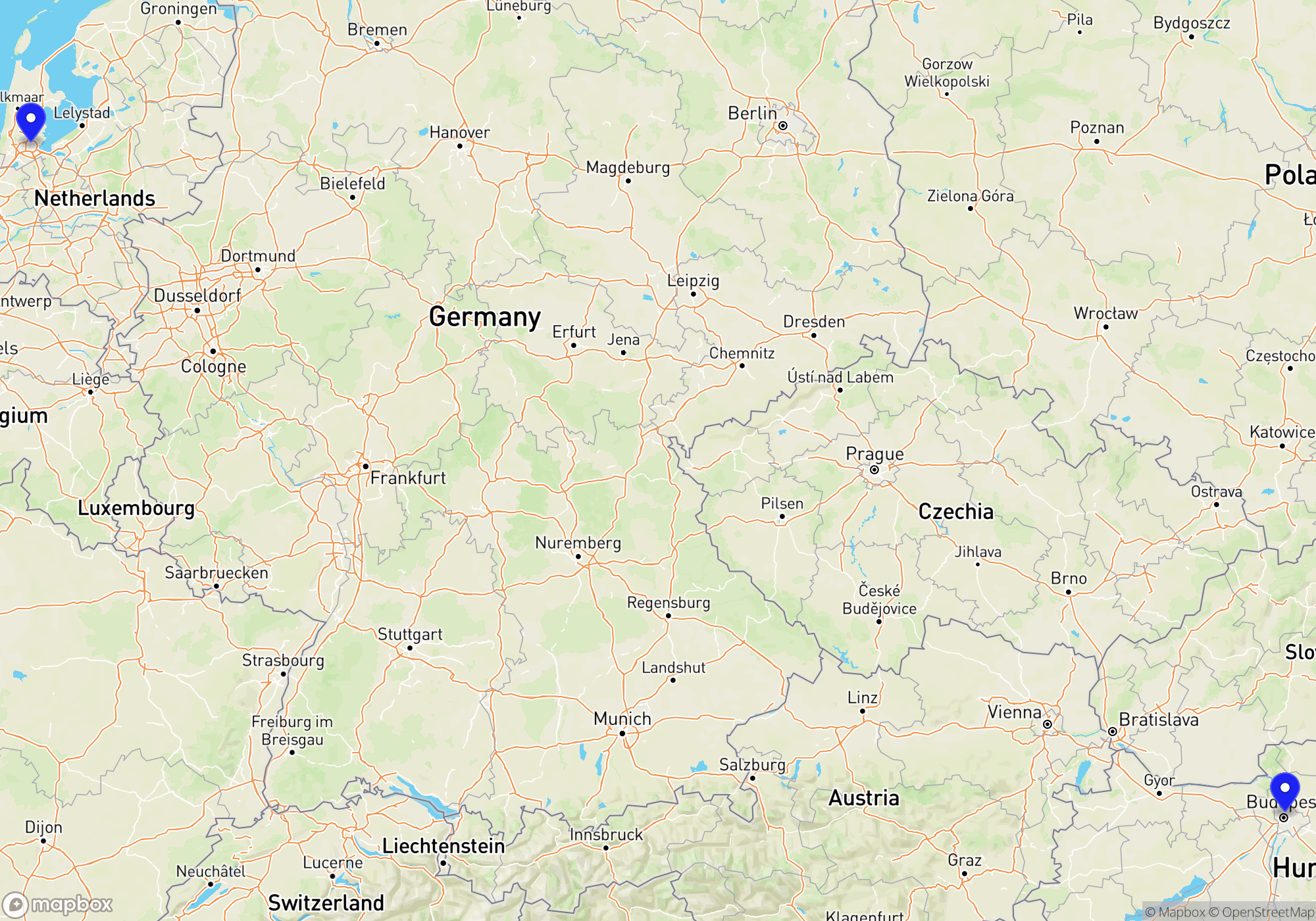
You can buy train tickets directly from the operator or through a reseller. The reseller is typically slightly more expensive (3-5%) but can provide an easier booking experience, especially if you travel with more than one operator.


These operators provide a complete journey either as a direct connection or through their partners. Even if a change of trains is involved, it’s all part of a single itinerary managed by the same train company or its partners, offering a smoother and more coordinated travel experience.

Some operators don’t run direct trains the whole way, but they serve either the departure or arrival station. In many cases, you can combine two of these operators to complete your journey by changing trains along the way. This is often a flexible and budget-friendly way to travel — especially if you’re comfortable piecing together your own itinerary.
Just keep in mind that these are separate journeys, which means a delay on the first leg could cause you to miss the second without automatic compensation or rebooking. It’s a great option for confident travelers who don’t mind a bit of extra planning.



FlixBus is primarily a long-distance bus service rather than a traditional rail operator. It offers affordable and convenient travel options across Europe including routes connecting Amsterdam to various destinations, although it doesn’t operate trains. However, FlixTrain is a subsidiary of FlixBus and provides rail services on limited routes within countries like Germany and Sweden. FlixTrain uses standard train types that vary depending on the specific route and availability but generally offer comfortable seating comparable to other European train operators. Amenities on FlixTrain typically include free Wi-Fi, power outlets at the seats, and onboard restrooms. The service prioritizes budget-conscious travelers while maintaining a basic level of comfort. FlixBus, encompassing both bus and train services, offers customer support through its website and app where travelers can manage bookings, and compare routes and schedules, and they also provide support via their customer service team, which is reachable for assistance with travel inquiries or issues. Travelers interested in train travel from Amsterdam to Budapest should consider conventional rail operators like Deutsche Bahn, ÖBB, or the Hungarian Railways, which offer comprehensive rail connections between these cities, as FlixBus primarily supports connecting bus services rather than train services for this specific route.
When traveling by train from Amsterdam to Budapest, several rail passes could be applicable. The Interrail Global Pass is valid for residents of Europe and covers travel in multiple countries, including the Netherlands, Germany, Austria, and Hungary, which are the typical countries on the route from Amsterdam to Budapest. The Interrail One Country Pass is not applicable for this journey as it only covers travel within a single country. The Eurail Pass is intended for non-EU residents and similarly provides coverage for travel across multiple countries along this route. Therefore, the Interrail Global Pass and Eurail Pass can be used for this journey, provided the eligibility criteria for residency are met.
Upon arriving in Budapest by train, you’ll find the city well-connected and easy to navigate using various modes of local transportation. Budapest’s public transportation system is efficient, consisting of trams, metros, buses, and trolleys operated by BKK (Budapesti Közlekedési Központ). The metro system has four lines (M1, M2, M3, M4) that connect major areas of the city, with several interchange stations for easy transfers. You can purchase single tickets or travel passes, which are valid across all public transport modes, at ticket machines or BKK points located in metro stations and major transport hubs.
The tram network is extensive, with iconic lines like Tram 2 offering scenic routes along the Danube River. Trams are frequent and a great way to see the city above ground. Buses and trolleys extend coverage to areas not served by the metro or tram, making them useful for reaching more suburban locations.
For taxis, it’s advisable to use legitimate taxi companies like Főtaxi or City Taxi to ensure metered fares. Official taxis are typically yellow with a clearly displayed company logo. Alternatively, ridesharing services such as Bolt and Uber are popular and convenient options in Budapest, though pricing can vary based on demand.
Navigating Budapest with its public transport is straightforward once you become familiar with the map and routes. Ensure you validate your tickets before each journey to avoid fines, as ticket checks are common.
Budapest, a central hub in Eastern Europe, offers a range of popular rail connections, both domestically and internationally. Domestically, some notable routes include the journey to Debrecen, Hungary’s second-largest city, which provides a scenic trip through the Great Hungarian Plain. Trains to the city of Pécs, nestled in the Mecsek Mountains, are also frequently used for those exploring the cultural richness of southern Hungary. Internationally, Budapest is connected to Vienna, Austria, with frequent and fast Railjet trains offering a comfortable two and a half hour ride. Another popular route is to Bratislava, Slovakia, which is easily accessible with a journey time of just over two hours. Budapest also connects to Prague, Czech Republic, with direct trains that take about seven hours, making it a popular overnight option. For those traveling further afield, the EuroNight service to Bucharest, Romania, offers a convenient overnight journey. Additionally, Budapest serves as a key stop on routes that head towards Belgrade, Serbia, and Zagreb, Croatia. These international services highlight Budapest’s strategic location in the European rail network, providing efficient and scenic travel options for passengers.
The best months to visit Budapest are generally from March to May and September to November. During spring and early autumn, the weather is mild and pleasant, making it ideal for exploring the city by foot or embarking on train journeys through the scenic landscapes surrounding Budapest. These shoulder seasons also often feature moderate crowds, allowing for a more relaxed experience compared to the peak summer months. Prices for accommodations and attractions are typically lower than in summer, offering better value for travelers.
Springtime in Budapest is especially beautiful as the city’s gardens and parks come to life. In April, the Budapest Spring Festival showcases a wide range of cultural performances, from music to dance. During autumn, the city enjoys a colorful transformation as trees turn vibrant, and the Budapest Wine Festival, usually held in September, provides an opportunity to savor local expressions of food and wine against the stunning backdrop of Buda Castle.
Summer, from June to August, is the peak tourist season with warmer temperatures, lively outdoor events, and festivals like the Sziget Festival attracting lots of visitors, but this also means higher prices and larger crowds. Winter is colder, with December offering festive attractions like Christmas markets, but overall fewer activities and potentially harsh weather conditions. Arriving by train fits well into these shoulder seasons when European rail travel is also less congested than during holiday peaks.
When traveling by train from Amsterdam to Budapest, it’s important to pack a passport or national ID card as legally required travel documents. Bring a versatile travel plug adapter as the Netherlands uses type C and F plugs with a 230V supply, while Hungary uses the same type C and F plugs. Pack comfortable clothing for the duration of the journey, keeping in mind the weather in Budapest. A small travel pillow and blanket can make the train ride more comfortable. Consider noise-canceling headphones or earplugs to block out sound. Don’t forget electronic devices like a smartphone or tablet along with chargers and a power bank. A portable Wi-Fi hotspot or a local SIM card can help you stay connected. Bring snacks, a reusable water bottle, and any medications you might need. A book or journal can be a pleasant way to pass the time. Lastly, ensure you have local currency or access to a credit/debit card that works internationally for expenses at your destination.